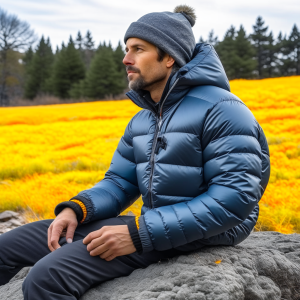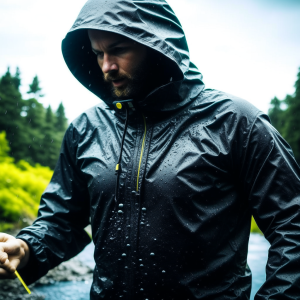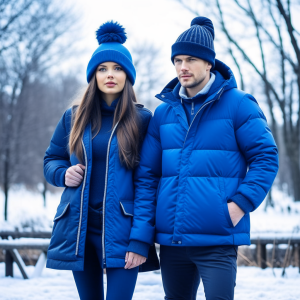Master the Art of Layering Cold Weather Clothing for Unmatched Warmth and Style
As winter descends with its biting chill, finding the perfect balance between warmth and fashionable attire becomes imperative. With temperatures plummeting, the importance of layering your clothing cannot be overstated. Have you ever wondered about the science behind effective layering techniques? In this comprehensive guide, we will delve into the principles that dictate successful layering, uncovering the reasons why specific garments excel in combating the cold. Armed with this knowledge, you will be equipped to remain both cozy and stylish throughout the winter season, ensuring that you embrace the cold with confidence and flair.
Layering is more than just a fashion statement; it is a calculated approach to enhancing heat retention and overall comfort in chilly environments. When temperatures drop, the body instinctively reacts to conserve heat by constricting blood vessels, often resulting in cold extremities. Unfortunately, this natural response may not always be sufficient. This is where strategic layering comes into play, allowing you to create an effective barrier against the cold while ensuring mobility and comfort. By understanding and implementing these layering techniques, you can maximize your warmth and enjoy your winter adventures without compromise.

Establish Your Base Layer: The Cornerstone for Winter Warmth and Comfort
The base layer is the fundamental building block of your winter wardrobe, meticulously designed to fit closely against your skin while delivering essential insulation. To fully grasp the significance of this layer, we must explore the intricacies of moisture management and its profound impact on your warmth and comfort during the colder months. By understanding how moisture interacts with your body, you can make informed choices regarding materials and designs that optimize your layering effectiveness.
Harnessing Moisture-Wicking Fabrics for Exceptional Comfort
Selecting the appropriate fabric for your base layer is crucial for effective moisture management. The significance of moisture-wicking properties cannot be understated. These specially engineered fabrics excel at pulling moisture away from your skin—whether it stems from sweat or external dampness—thereby preventing discomfort and chilling sensations. A top-quality base layer not only acts as a protective moisture barrier but also ensures that you remain dry and cozy, even in challenging weather conditions, significantly enhancing your overall warmth and comfort.
Exploring Insulation: The Advantages of Merino Wool and Synthetic Fabrics
Next, we will investigate how materials like merino wool and synthetic fibers can significantly boost the insulating capabilities of your base layer. Known for its natural warmth and breathability, merino wool is an exceptional option that provides effective insulation while skillfully wicking moisture away. Alternatively, synthetic materials such as polyester and nylon present a fantastic combination of durability and insulation, creating a warm microclimate next to your skin that effectively retains body heat, ensuring your comfort even in the most extreme conditions.
Perfecting the Fit: Key Tips for Base Layer Performance
Choosing the right fit for your base layer goes beyond simply picking your standard size; it is about enhancing overall performance. A snug fit guarantees constant contact with your skin, boosting both insulation and moisture-wicking capabilities. However, achieving the right balance is essential—too tight can restrict movement and comfort, while too loose may impair performance. Consider your activity level and layering strategy to ensure that your base layer integrates seamlessly with your other winter garments, maximizing comfort and effectiveness.
In essence, the base layer represents more than just another clothing item; it serves as a sophisticated moisture-wicking and insulating barrier against the harsh winter elements. By understanding the unique properties of materials like merino wool and synthetic fibers, along with mastering the perfect fit, you can elevate your base layer from a mere garment to a crucial element of your defense against the cold.
Unlock the Insulating Layer: Your Key to Optimal Body Heat Retention
 As we progress to the insulating layer, we will focus on its vital role in capturing and retaining heat around your body. This layer is essential for maintaining warmth, serving as a protective cocoon against the harsh elements of winter. We will explore critical aspects such as warmth-to-weight ratios, the benefits of down insulation, and the eco-friendly advantages of synthetic alternatives, all of which contribute to effective heat management and comfort.
As we progress to the insulating layer, we will focus on its vital role in capturing and retaining heat around your body. This layer is essential for maintaining warmth, serving as a protective cocoon against the harsh elements of winter. We will explore critical aspects such as warmth-to-weight ratios, the benefits of down insulation, and the eco-friendly advantages of synthetic alternatives, all of which contribute to effective heat management and comfort.
Understanding Warmth-to-Weight Ratios for Optimal Insulation
Grasping the concept of warmth-to-weight ratios is essential when selecting an insulating layer. This principle emphasizes that insulation materials should deliver outstanding warmth without adding unnecessary bulk. Essentially, it’s about maximizing warmth while minimizing weight, allowing for free and comfortable movement. This balance is particularly crucial for those who seek insulation without feeling weighed down, enabling unrestricted activity in cold conditions while ensuring that you remain cozy and warm.
Down Insulation: Lightweight Warmth for Outdoor Enthusiasts
Down insulation is a standout choice for individuals seeking unparalleled warmth in an ultra-lightweight form. Sourced from the soft feathers of ducks and geese, down is renowned for its remarkable warmth-to-weight ratio. Its lightweight and compressible characteristics make it ideal for winter adventurers who require effective insulation without sacrificing mobility. Recognizing the benefits of down insulation is essential for understanding its role in creating an insulating layer that seamlessly embodies warmth, comfort, and flexibility, enabling you to face the cold with ease.
Choosing Synthetic Insulation: Ethical Warmth for Every Climate
Synthetic insulation materials, primarily crafted from polyester fibers, have emerged as popular ethical alternatives in the insulation domain. What differentiates synthetic insulation is its remarkable ability to retain heat even in wet conditions, an area where down may struggle. This resilience in unpredictable weather makes synthetic fabrics suitable for a wide range of climates. Moreover, opting for synthetic options aligns with ethical considerations, allowing you to enjoy warmth without compromising your values or the environment.
Determining the Right Thickness: Precision in Insulation Choices
Choosing the appropriate thickness for your insulating layer requires careful consideration; precision is key. Assess the expected level of cold exposure alongside your layering strategy when determining the right thickness. In milder climates, a thinner insulating layer may suffice, while harsher conditions may necessitate a thicker, more robust option. By understanding the nuances of insulation thickness, you can customize your insulating layer to meet the specific demands of your winter activities, ensuring that you remain warm and comfortable no matter where you are.
Ultimately, the insulating layer transcends traditional clothing roles, evolving into a strategic ally in the battle against the cold. By deciphering the complexities of warmth-to-weight ratios, appreciating the advantages of down insulation and synthetic alternatives, and providing guidance on thickness selection, we transform the insulating layer into a calculated defense mechanism against winter’s icy grip.
Your Outermost Layer: The Ultimate Defense Against Winter’s Elements
The outermost layer serves as your essential barrier against biting winds and freezing temperatures. This layer plays a dual role: it protects against environmental elements while also significantly contributing to moisture management. As we delve deeper into the outer layer, we will uncover the importance of breathability, the transformative impacts of DWR finishes and Gore-Tex membranes, as well as the essential windproof features that enhance the efficiency of your insulation.
Emphasizing Breathability: The Foundation of Comfort and Moisture Control
Often underestimated, breathability is a crucial feature of the outer layer that greatly influences overall comfort. This characteristic refers to the fabric’s ability to allow sweat vapor to escape from your body while simultaneously preventing external moisture from infiltrating. Achieving this delicate balance keeps you dry and comfortable, thereby alleviating the chilling effects of trapped moisture. A breathable outer layer is essential for maintaining a warm microclimate within your clothing, ensuring exceptional comfort during inclement weather.
DWR Finishes and Gore-Tex: The Pinnacle of Waterproofing Technology
 DWR (Durable Water Repellent) coatings and Gore-Tex membranes lead the forefront of cold-weather outerwear technology. DWR finishes provide water-repellent properties to fabrics, creating a formidable shield against rain, sleet, and snow. Gore-Tex and similar technologies elevate waterproofing by offering an impeccable combination of impermeability and breathability. Understanding how these technologies function together is essential for staying dry and comfortable, even in the harshest weather conditions.
DWR (Durable Water Repellent) coatings and Gore-Tex membranes lead the forefront of cold-weather outerwear technology. DWR finishes provide water-repellent properties to fabrics, creating a formidable shield against rain, sleet, and snow. Gore-Tex and similar technologies elevate waterproofing by offering an impeccable combination of impermeability and breathability. Understanding how these technologies function together is essential for staying dry and comfortable, even in the harshest weather conditions.
Windproof Features: Strengthening Your Defense Against Cold Winds
Windproof attributes are crucial in freezing weather, especially when bitter gusts can penetrate even the sturdiest fabrics. The windproof outer layer acts as an impenetrable shield against cold air, enhancing comfort while safeguarding the insulation layers beneath. By blocking frigid winds, your outer layer becomes a formidable defender, ensuring that your carefully selected layers work harmoniously to keep you warm and shielded from harsh elements.
In essence, the outermost layer is more than just a protective shell; it serves as a sophisticated barrier that expertly balances breathability and waterproofing. By understanding the significance of breathability, exploring the advancements of DWR finishes and Gore-Tex membranes, and recognizing the vital role of windproof features, we elevate the outer layer into a dynamic garment that excels in style, functionality, and weather resistance.
Practical Strategies for Enhancing Warmth and Style This Winter
With a firm grasp on effective layering established, let’s explore actionable tips and strategies to enhance your cold-weather experience, seamlessly merging warmth with enduring style. Accessories are integral to winter attire, often functioning as unsung heroes that elevate your wardrobe. From the essential warmth provided by thoughtfully chosen gloves to the stylish touch of a cozy hat, and the comfort of thermal socks—these seemingly small details play a vital role in achieving a fashionable and comfortable winter ensemble.
The Crucial Role of Accessories: Beyond Aesthetic Appeal
Accessories are not merely decorative; they are essential components of your defense against the cold. Beyond their visual charm, items such as gloves, hats, and thermal socks serve indispensable functions in enhancing your overall warmth. By thoughtfully integrating these accessories into your winter wardrobe, you can ensure that every part of your body is shielded from the chill, effectively preventing precious body heat from escaping into the icy air and allowing you to maintain comfort and style.
Investing in Quality Accessories: Recommendations for Ultimate Warmth
The quest for warmth extends beyond your base and insulating layers; it also involves deliberately selecting high-quality accessories. Invest in gloves crafted from insulating materials like fleece or lined leather to create a robust barrier against the cold. A warm hat with extra insulation or a cozy faux-fur lining not only adds a touch of style but also significantly aids in heat retention. Opt for thermal socks made from merino wool or advanced synthetic blends to guarantee maximum warmth and effective moisture management, ensuring that your feet remain comfortable and toasty in frigid conditions.
Fashion-Forward Tips: Merging Functionality with Style in Winter
Staying warm during frigid temperatures doesn’t have to compromise your sense of style. Utilize these savvy styling techniques to navigate the winter landscape with elegance and poise. Experiment with layering various textures within your outfit to create visual intrigue while simultaneously enhancing insulation. Choose winter-appropriate colors that resonate with the snowy backdrop, and don’t hesitate to accessorize with vibrant pieces like a bold scarf or fashionable earmuffs to elevate your overall appearance while maintaining warmth.
Ultimately, accessories are the understated architects of a well-rounded winter outfit. They not only enhance warmth but also allow you to express your personal style even in the coldest conditions. By selecting high-quality accessories and thoughtfully styling your winter wardrobe, you can conquer the chill while showcasing undeniable elegance and sophistication.
Embrace the Perfect Fusion of Style and Functionality in Your Winter Wardrobe
As we conclude our exploration of conquering the cold, it’s crucial to recognize the importance of style in winter clothing. Dressing warmly for the cold doesn’t mean sacrificing your fashion sense; instead, the contemporary fashion landscape embraces the fusion of functionality and flair. Numerous outdoor and fashion brands have acknowledged and embraced the demand for winter gear that not only keeps you warm but also exudes confidence and modern elegance.
The Transformation of Cold-Weather Clothing: A Stylish New Era
 The cold-weather clothing industry is undergoing a renaissance, where winter gear transcends basic functionality to embody innovation and style. Designers and brands are increasingly recognizing the necessity for clothing that seamlessly merges practicality with aesthetic appeal. This shift has ushered in a new era of outerwear that not only provides warmth but also captivates with its visual charm, making it a fashionable choice for winter.
The cold-weather clothing industry is undergoing a renaissance, where winter gear transcends basic functionality to embody innovation and style. Designers and brands are increasingly recognizing the necessity for clothing that seamlessly merges practicality with aesthetic appeal. This shift has ushered in a new era of outerwear that not only provides warmth but also captivates with its visual charm, making it a fashionable choice for winter.
Pioneering Brands: The Intersection of Style and Function
Several brands are leading this style evolution, skillfully blending fashion with functionality in their winter apparel. Canada Goose is renowned for its luxurious down coats that deliver exceptional warmth without compromising style. The North Face incorporates innovative technology into its designs, creating outerwear that harmonizes chic aesthetics with practical functionality. Meanwhile, Moncler has redefined the puffer jacket, transforming it into a high-fashion statement piece, demonstrating that winter clothing can seamlessly blend functionality and runway-ready style.
Effective Styling Strategies: Elevate Your Winter Fashion Game
Now, let’s discuss how to effectively merge warmth and style in your winter outfits. Select standout pieces that fulfill both functional and aesthetic purposes, such as a beautifully tailored wool coat or a sleek parka that serves as the centerpiece of your ensemble. Experiment with layering a chunky knit sweater over a fitted jacket for a cozy yet stylish look. Don’t hesitate to introduce vibrant colors into your winter wardrobe by accessorizing with striking scarves or trendy boots that uplift your overall appearance while maintaining comfort.
Ultimately, embracing style in the cold is no longer a contradiction; it’s a vibrant reality shaped by a dynamic fashion industry. As fashionable cold-weather gear emerges, championed by innovative brands, the narrative shifts from mere survival to personal expression. So, immerse yourself in this style renaissance, choose pieces that empower you, and redefine fashion amid the wintry embrace of the season.
The post Cold Weather Clothing Layers: The Science Explained appeared first on Survival Bite.
The Article Cold Weather Clothing Layers Explained: Understanding the Science Was Found On https://limitsofstrategy.com
The Article Cold Weather Clothing Layers: The Science Behind Them First Appeared ON
: https://ad4sc.com



The discussion around the art of layering is indeed timely, especially as we navigate the colder months. I’ve always found that mastering this technique can dramatically transform how we experience winter, both in terms of physical comfort and personal expression. As someone who has lived in various climates—from the mild winters of the West Coast to the biting cold of the Midwest—I have come to appreciate the nuanced approach that layering provides.
You’ve raised an intriguing point about the intricacies of layering for cold weather, particularly the balance between warmth and style. In my experience, mastering this art is not merely about aesthetics; it also intersects with practicality and personal comfort. Over the years, I’ve become acutely aware of how certain materials interact with body temperature regulation, particularly when exposed to harsh winter conditions.
You raise a great point about the interplay of warmth and style in cold weather layering. I think it’s fascinating how, beyond just looking good, the materials we choose can significantly impact our comfort levels. Over the years, I’ve tinkered with different fabrics, and it’s surprising how a simple tweak—a shift from cotton to merino wool, for example—can make all the difference in regulating body temperature during those frigid months.
I really appreciate your insights on the art of layering, especially as winter settles in with its chilling embrace. The way you’ve highlighted both the practicality and style of layering resonates with my own experiences. Growing up in a place where winters could be merciless, I quickly learned that staying warm without sacrificing my personal style was crucial.